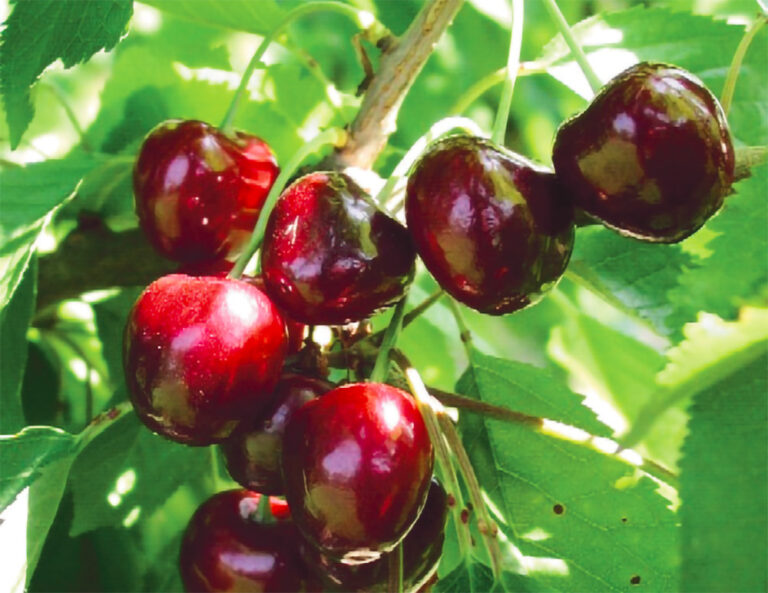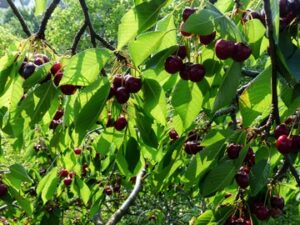“FERROVIA” CHERRY TREE
In local dialect : ” Cerescia “
Prunus avium L.
Rosaceae
In Italy, Ferrovia cherries (Prunus avium L.) are one of the most refined and sought-after cherry varieties. It is known for its exceptional size and sweet, juicy taste.
📍 Origin and Story
🌱 The name “Ferrovia” (literally “railway”) comes from a legend, according to which, in the 20th century, the original tree grew spontaneously next to the Sammichele di Bari railway track in Apulia. The tree is said to have grown as a result of a German traveller who, after eating cherries, left the seeds along the railway. These seeds took root in the area, where the climate was particularly suitable, and the new fruits grew larger and sweeter than their German “parents.”
🚂Farmers noticed the extraordinary quality of these fruits and began to reproduce the tree. Because of this, it quickly spread throughout the region.

🍒 Fruit’s features
✔️ Shape: heart-shaped, with a slightly elongated base.
✔️ Size: really big, up to 9-10 g per fruit.
✔️ Colour: bright red; it turns dark red when the fruit is ripe.
✔️ Pulp: firm, juicy and sweet, with a perfect balance between sourness and sugar
✔️ Taste: delicate, very fragrant with a slightly winey aftertaste.
🌳 Tree’s features
✔️Vigour: it is a big-size tree with a wide, strong crown.
✔️ Pollination: Due to its self-incompatibility, it requires pollinators, such as the Giorgia or Lapins cherry varieties.
✔️ Ripening period: late ripening, from the end of May to mid-June.
✔️ Resistance: Great resistance to transportation and post-harvest storage.

🏡 BACK TO THE PRESENT
🔹 Today, thanks to its excellent resistance to conservation and transportation, this type of Italian cherry is one of the most exported abroad.
🔹 Its cultivation is located especially in Apulia, but you can also find it in Emilia-Romagna and Campania.
🔹 It is perfect for fresh consumption, desserts and homemade preparations.
🍒A cherry you won’t forget!
It is not an ancient fruit, and, to date, it is not at risk of disappearing. We included it because we wanted it to be next to sour cherries and wild sour cherries. In this way, you can assess similarities and differences. Let’s learn to recognize plant elements through our senses!
These contents were written and researched by the owners of the SiGi Agricultural Company in collaboration with the students of the Agricultural Technical Institute of Macerata.
If you would like to contribute to expanding the descriptions of these varieties, you can send an e-mail to info@agricolasigi.it
We launched the e-museum of ancient fruits thanks to a social farming project of the Marche region. The translation is by komalingua
This project enabled five young people with cognitive impairments, aged 20 to 25, to work on the farm. They were selected by psychologists and Anffas social workers, supported by the professional educator Il Faro and supervised by UniMc researchers. Coldiretti Marche handled communication and distribution.
This unique and challenging project led to the creation of both a physical and virtual museum of ancient fruits in SiGi’s garden. This is not only a great honor but also a significant commitment that we are willing to continue with everyone’s support. You can contribute to our projects by choosing our products, or you can do so directly here:

